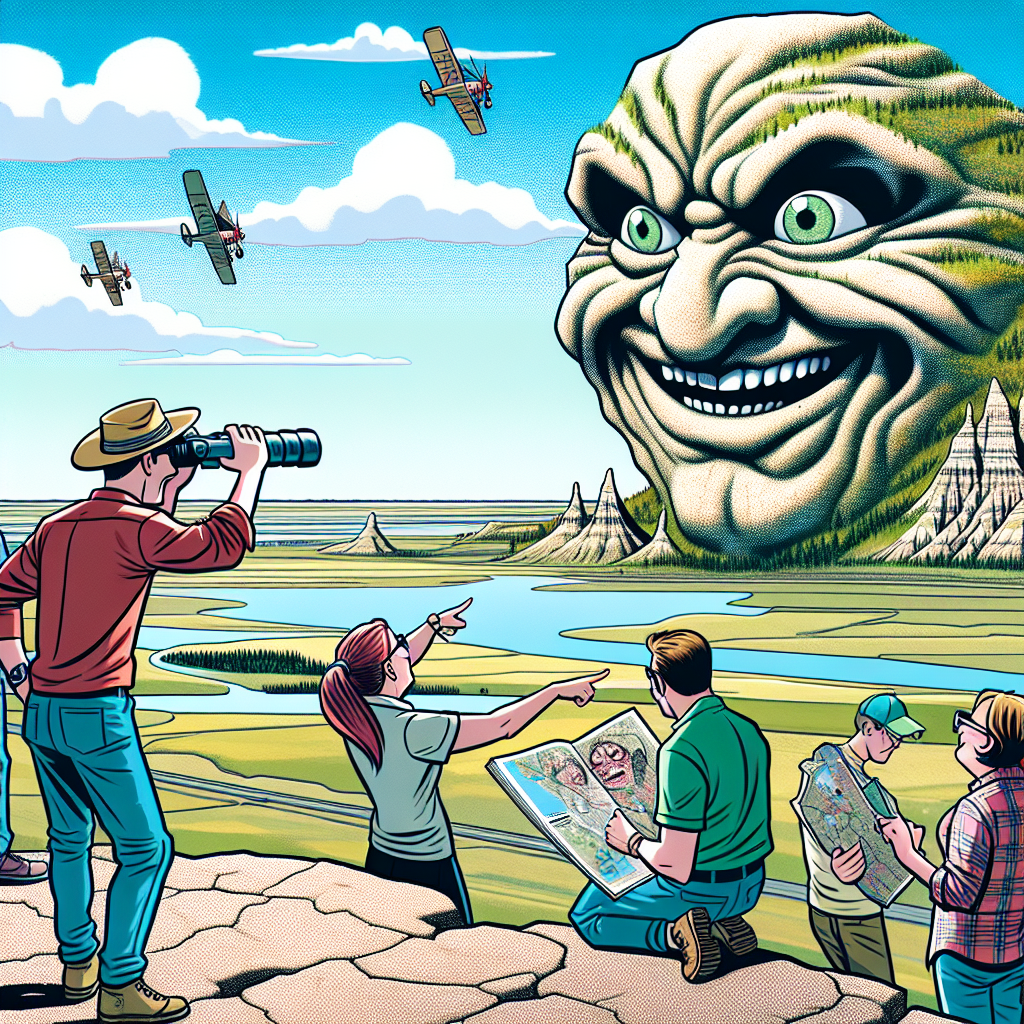Badlands Guardian: Nature’s Own Optical Illusion or Just a Bunch of Overhyped Hooey?

Sometimes you stumble on something and think, “Well, that’s pretty neat,” and then you quickly figure out it’s just Mother Nature messing around, and people with too much time on their hands turn it into some grand mystery.
The so-called “Badlands Guardian” — a weird human head shape spotted in satellite images of Alberta, Canada — is one of those stories. A face etched in the dirt, about 22 miles east of Medicine Hat, visible only from way up high in the sky. Some folks call it a natural landform shaped by erosion, others try to whisper about ancient civilizations or spiritual guardians watching over the land. Let’s cut through the fluff and call this what it is: a quirky geographic coincidence that’s gotten way more attention than it deserves.
First off, I’ll admit, when you see something resembling a giant face staring back at you from the earth, your brain’s going to run full tilt with imagination. Our noggins are wired that way: humans see faces everywhere. Clouds, rock formations, burned toast—you name it. It’s called pareidolia, and it’s as natural as breathing. This face? Probably just a trick of shadows, erosion, and the sheer coincidence of terrain contours blending just right.
But it’s no surprise that some people jump to fanciful conclusions. After all, it’s more fun to spin stories about native spirits and guardians than to accept that the Badlands Guardian is nature doing her own thing. These tales can have their place, respect for local cultures included, but when that respect turns into romanticizing or downright fabricating, it crosses a line. There’s nothing wrong with appreciating indigenous history and culture, but we shouldn’t turn natural oddities into mystical relics every time the landscape throws us a curveball.
Now, let’s get real about the fascination with finding faces in the dirt. It says a lot about how people want to find meaning and patterns in the chaos around them. I get it. The world’s been throwing curveballs lately, so people need anchors—signs, symbols, something that connects them to the past or a bigger story. But honestly, sometimes you just gotta admit that a face on the ground is only a face on the ground. No ancient UFO landing strips or ghostly guardians, just erosion and some geological whimsy.
And you know, speaking as someone who appreciates the straightforward and doesn’t fuss over every little myth or legend, I find this whole spectacle a bit silly. I drive trucks, I work with my hands, and I appreciate the raw, unpretentious stuff in life. A giant face in the dirt is fine for a quick glance or a fun picture, but it ain’t some secret message carved by gods or lost tribes.
People love mysteries. They relish the idea that the landscape can whisper secrets from centuries ago, that rocks can speak, and that nature is deliberately sending us messages. Nah, nature doesn’t care if you see a face or a dragon or a giant chicken. She shapes the land by wind and water, sunshine and time, not by conspiracy or supernatural messaging. Sometimes a rock is just a rock and a face is just an accident of erosion.
Still, look, I’m not saying don’t enjoy the story of the Badlands Guardian. It’s a cool piece of trivia, a neat demonstration of how our brains connect dots. It’s a reminder of just how wild and varied the landscape can be. Satellite imagery opens up new ways to see our world, and sometimes you get lucky with something eye-catching. That’s the real magic here, not some mystical force or ghostly protector.
And hell, if it gets folks to take an interest in geography or geology, all the better. But don’t get too sucked into the mumbo jumbo about spiritual guardians or alien conspiracies. Stay grounded—literally and figuratively. Appreciate the beauty and weirdness of the world as it is, not as you wish it to be.
At the end of the day, the Badlands Guardian is a reminder that we love patterns and stories because it helps us make sense of the randomness. But sometimes, randomness is just randomness—and that’s okay. Nature’s got no agenda except to keep on doing her thing, carving landscapes and forming shapes that keep us guessing. It’s less about some hidden message and more about the quiet wonder of a world that can still surprise us, without needing any paranormal explanations.
So next time you’re scrolling through satellite images or staring out over a desert or valley, and you see something that looks like a face, a beast, or a giant truck, just tip your hat to nature’s sense of humor. No need for wild stories or conspiracy theories, just a nod to the artistry of wind, rain, and time.

